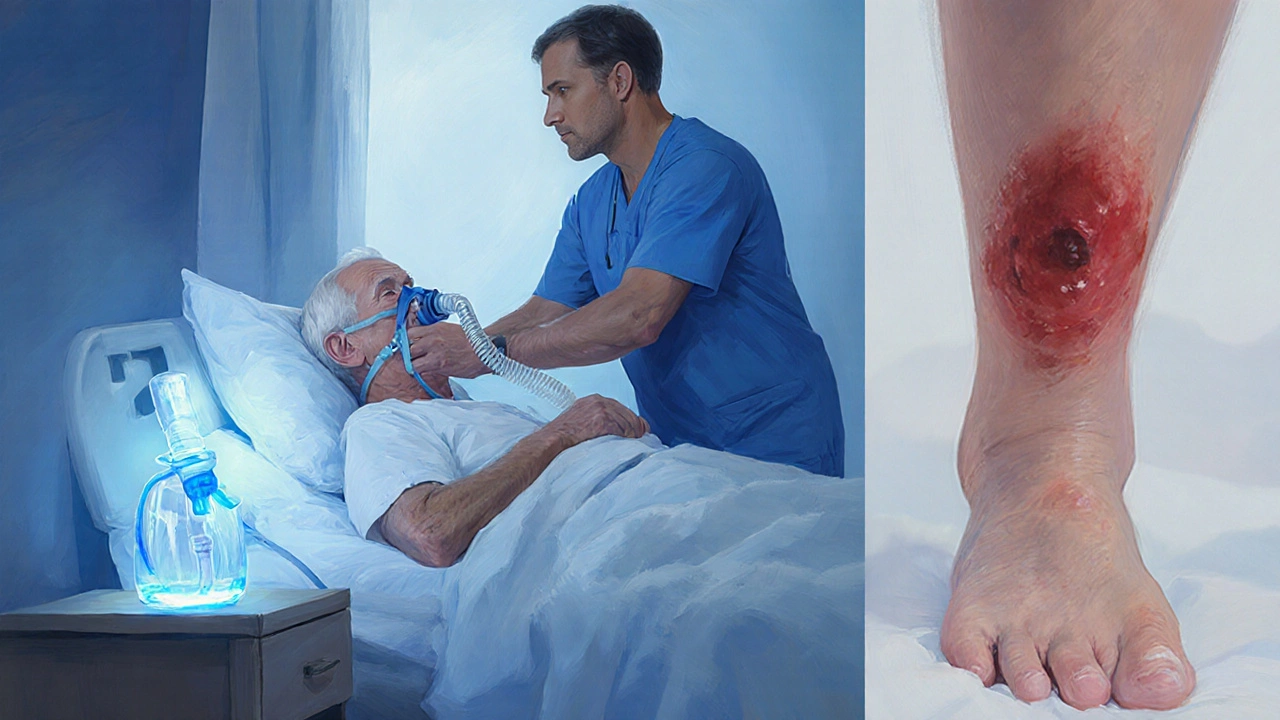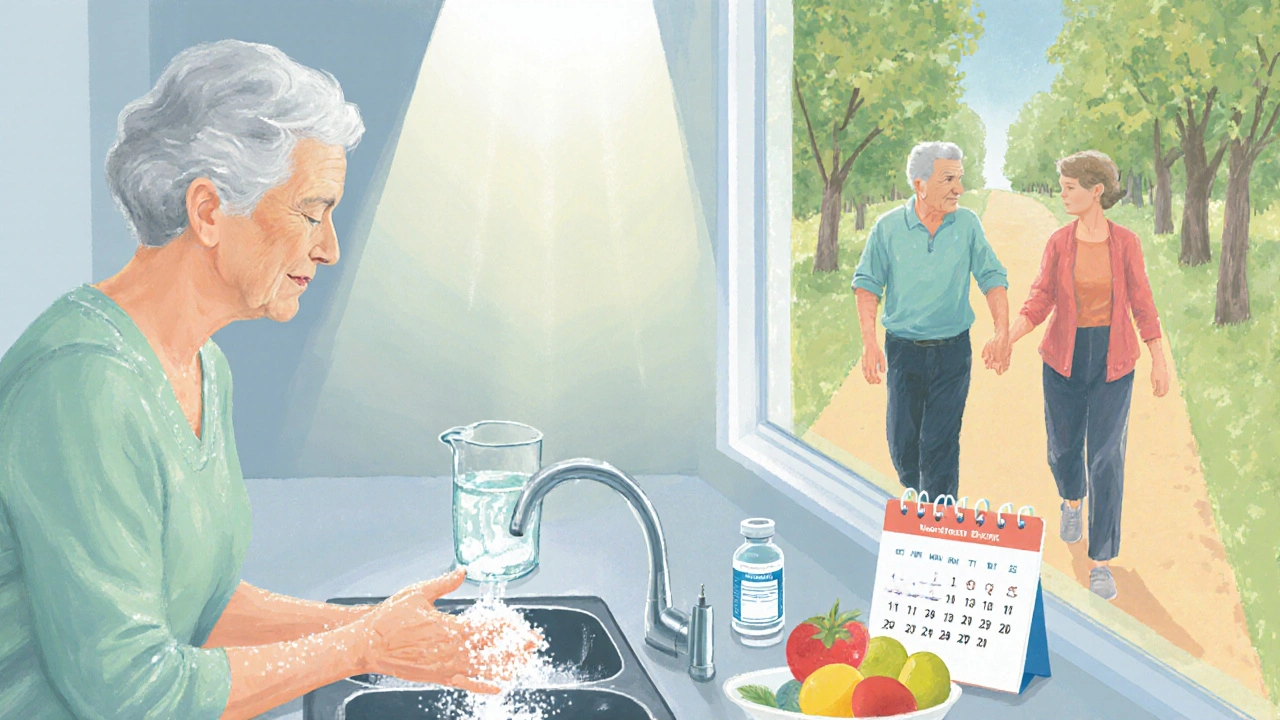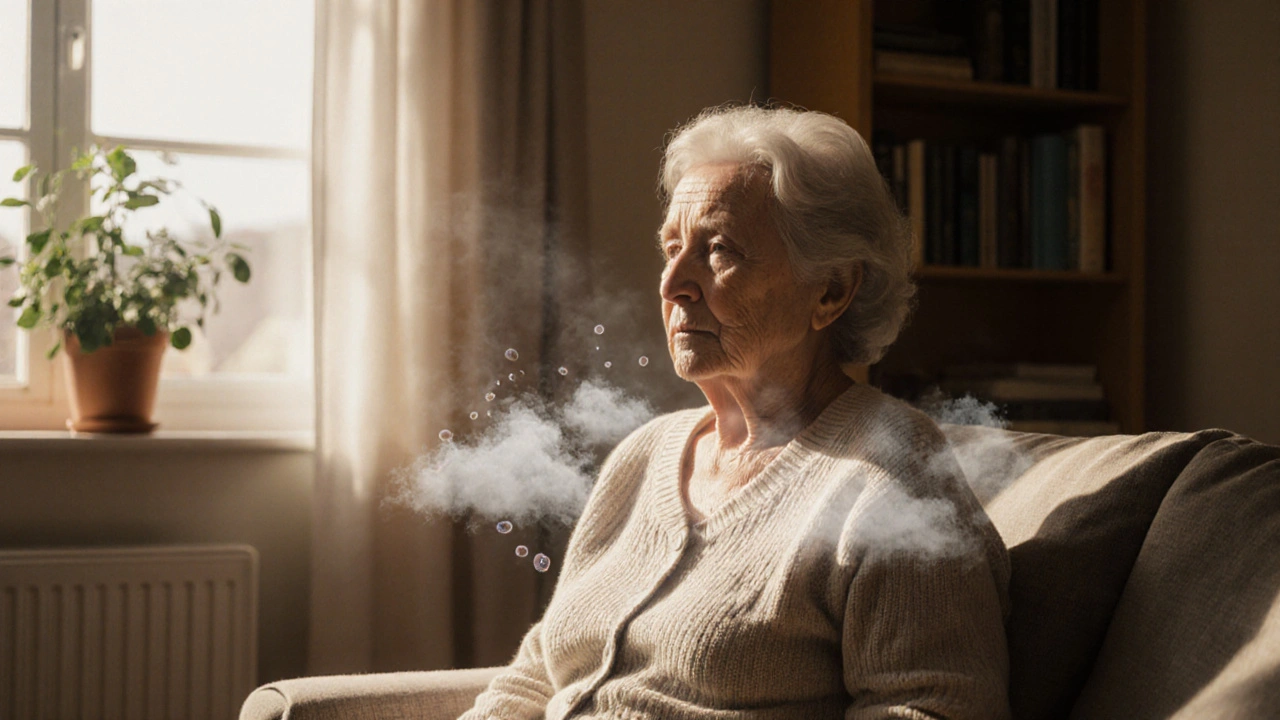Senior Infection Risk Assessment Tool
Assess Your Infection Risk Factors
Answer the following questions to get a personalized risk assessment for common infections in seniors.
Your Infection Risk Level
-
-
- Get all recommended vaccines including flu, pneumococcal, and shingles.
- Maintain good hand hygiene with soap and water for at least 20 seconds.
- Stay hydrated and eat a balanced diet rich in protein, vitamin C, and zinc.
- Regular exercise improves circulation and respiratory capacity.
- Manage chronic conditions tightly with medical supervision.
When it comes to Infections in the Elderly a group of health challenges that affect people over 65, often with more severe outcomes than in younger adults, the stakes are high. Older adults face a mix of weaker immune defenses, chronic illnesses, and environments that can foster germs. This guide breaks down the most common infections, why seniors are especially vulnerable, and practical steps you can take right now to lower the risk.
Why Infections Hit Seniors Harder
Age‑related changes in the immune system-sometimes called Immune Senescence the gradual decline of immune function that comes with growing older-mean the body doesn't fight off pathogens as efficiently. Add in common comorbidities like diabetes or heart disease, and the body’s ability to recover is further compromised. Even a mild cold can turn into a serious bout of pneumonia, and a simple urinary tract infection (UTI) can lead to sepsis if not caught early.
Top Infections Affecting Seniors
Here’s a quick snapshot of the infections you’ll hear about most often in senior care settings:
- Pneumonia an infection of the lung tissue that can be bacterial, viral, or fungal, often triggered by influenza or aspiration.
- Urinary Tract Infection an infection of the bladder or kidneys, frequently caused by E. coli, especially common after catheter use.
- Skin Infection including cellulitis, cellulitis, and shingles, usually entering through cuts or pressure sores, exacerbated by reduced skin elasticity.
- Influenza the seasonal flu virus, which can lead to severe complications in older adults, often preventing hospitalizations when vaccination is up to date.
- COVID‑19 the coronavirus that still poses a heightened risk for severe disease in the elderly, especially for those with weakened immunity.

Comparing the Most Common Senior Infections
| Aspect | Pneumonia | UTI | Skin Infection |
|---|---|---|---|
| Typical Pathogens | Streptococcus pneumoniae, viral flu, aspiration bacteria | E. coli, Klebsiella, Proteus | Staphylococcus aureus, Streptococcus pyogenes, Varicella‑zoster |
| Main Symptoms | Cough, fever, shortness of breath, chest pain | Burning urination, urgency, fever, confusion | Redness, swelling, pain, pus, sometimes fever |
| Risk Boosters | Smoking, COPD, recent flu, immobility | Catheter use, dehydration, prostate enlargement | Diabetes, poor circulation, pressure ulcers |
| Typical Treatment | Antibiotics (if bacterial), antivirals, oxygen support | Antibiotics, increased fluid intake | Topical/oral antibiotics, wound care, antiviral (shingles) |
| Complication Rate | High - up to 30% mortality in hospitalized seniors | Moderate - can progress to sepsis if untreated | Variable - cellulitis can spread quickly |
Key Prevention Strategies
Preventing infections is often easier than treating them, especially when you focus on a handful of proven habits.
- Vaccination: Keep flu shots, pneumococcal vaccines, COVID‑19 boosters, and the shingles vaccine up to date. Vaccination the process of stimulating immune protection through licensed vaccines reduces hospitalization risk by 60‑80% for many seniors.
- Hand Hygiene: Wash hands with soap for at least 20 seconds before meals, after using the bathroom, and after touching shared surfaces. Hand Hygiene a simple practice that removes pathogens and cuts transmission chains is the single most cost‑effective infection control measure.
- Maintain good oral health - regular brushing and dental check‑ups lower pneumonia risk by preventing aspiration of oral bacteria.
- Stay hydrated and eat a balanced diet rich in protein, vitaminC, and zinc to support immune function.
- Exercise regularly, even light walking, to improve circulation and respiratory capacity.
- Manage chronic conditions tightly; well‑controlled diabetes, hypertension, and COPD lower infection susceptibility.
- Review medications with a pharmacist - some drugs (like steroids) suppress immunity.
- For those in long‑term care, ensure regular cleaning of high‑touch areas and proper wound care protocols.
Dealing With Antimicrobial Resistance
Older adults often receive antibiotics more frequently, which can foster Antimicrobial Resistance the ability of microbes to survive despite drug treatment. To curb this:
- Only use antibiotics when a bacterial infection is confirmed.
- Complete the full prescribed course, even if symptoms improve.
- Ask the doctor about culture tests before starting a new antibiotic.

When to Seek Medical Help
If you notice any of these red‑flag signs, call a healthcare professional right away:
- Sudden confusion or disorientation.
- High fever (>38°C/100.4°F) that won’t come down.
- Shortness of breath or chest pain.
- Severe pain, swelling, or redness that spreads quickly.
- Urine that looks cloudy, dark, or has a foul smell.
Early intervention can prevent a mild infection from spiraling into sepsis, which carries a mortality rate above 25% in seniors.
Putting It All Together: A Simple Daily Checklist
- Take all recommended vaccines on schedule.
- Wash hands before meals and after bathroom use.
- Drink at least 1.5L of water daily (more if active).
- Eat a protein‑rich breakfast with fruit.
- Do a 10‑minute walk or chair‑based exercises.
- Check skin for sores, redness, or cracks.
- Monitor urine output and color.
- Keep a list of current meds and share with your doctor.
Frequently Asked Questions
Why are UTIs more common in elderly women?
Shorter urethras and reduced estrogen levels after menopause make it easier for bacteria to travel up to the bladder. Additionally, limited mobility can lead to incomplete bladder emptying, creating a breeding ground for germs.
Can the flu vaccine really prevent pneumonia?
Yes. Influenza is a major trigger for secondary bacterial pneumonia. By preventing the flu, the vaccine indirectly reduces the chance of developing pneumonia, especially in people over 65.
What is the best way to improve hand hygiene in a care home?
Place alcohol‑based hand rub dispensers at every bedside, hallway, and dining area. Pair dispensers with visual reminders and brief staff training sessions conducted monthly.
How does immune senescence affect vaccine response?
Older immune systems produce fewer antibodies and have a slower T‑cell response. Higher‑dose or adjuvanted vaccines (like the high‑dose flu shot) are formulated to overcome this reduced responsiveness.
When should antibiotics be stopped early?
Only under a doctor's direction. Stopping early can leave surviving bacteria, increasing resistance risk. If side effects are severe, the prescriber may switch to a different agent instead of stopping altogether.
